- Home
- Peter Ackroyd
Thames Page 7
Thames Read online
Page 7
The earliest phase of Neolithic occupation in the Thames Valley is marked by steadily changing modes of work and activity. In place of the microlith and the pointed spear are found sickles, polished stone axes and querns. Pottery appears for the first time. Bows were fashioned from the wood of the yew; the arrows were of wood, and tipped with flint. It was the same type of longbow, some 5 feet (1.5 m) in height, that was used by the archers at Agincourt. Its survival over thousands of years is another sign of continuity and sheer force of habit as the prime factors in human existence. We should not assume any sudden emergence of new artefacts but, rather, a slow evolution that would not even have been noticeable at the time of change.
There have been discovered more than eighty Neolithic settlements in the course of the Middle Thames alone, and we can assume that the banks of the river were occupied at various advantageous sites from source to sea. The people lived in huts and congregated in small, perhaps temporary, villages from which the wisps of smoke would have been seen for miles around. They grew crops but, more importantly, they reared stock; they grazed pigs in the woodland, oxen and sheep on the grassland, both of which types of land were plentiful by the river. There is very little evidence of Neolithic dwellings themselves, however, only the remains of post-holes or ditches as the tokens of human habitation. There are deposits of flint, of course, and the traces of wheat, barley and beans.
In recent years the piles of a wooden structure have been found beside the river, where Runnymede Bridge now stands, and they have been deciphered as the remnants of a Neolithic wharf on both sides of the bank which was later superseded by a Bronze Age construction. If the interpretation is correct, then the Thames in the Neolithic and in the Bronze Ages was an important highway for transport and commerce. It is significant, too, that the course of the river was approximately that which survives still.
CHAPTER 9
The Sacred Lines
It is difficult to convey the mystery, the otherness, of early humankind. We do not know the purpose of the cursus monuments and causeway enclosures of the Neolithic period, and can only guess at the ritual significance embodied within their shape. The fact that they were placed beside the Thames offers another possible range of meanings. All we can say with any certainty is that these early tribes had a belief in the efficacy of special places, in the enclosure of ground, and in visibility. So they were led ineluctably to the river.
Aerial photography has over the past decades produced ghost images of ancient enclosures close to the Thames, shadow lands of lines and rectangles and circles scarcely visible within the modern terrain. Yet they are there, the sleeping faces of our ancestors still part of the land. Like the giant carvings of the Nazca they are now best seen from the air; but in the beginning they lent power and sacredness to the area in which they had been constructed.
The causewayed enclosures of the Thames region follow a general pattern; they consist of ditches arranged in the broad form of concentric ovals, with spaces or “entrances” between each segment of ditch and with causeways leading in or out of the ceremonial space. Some have only one ovoid ditch, with an internal bank, but others have several concentric circuits. The presumption must be that they were altered, and developed, over the passage of centuries. The ditches contained animal bones, pottery, and flint in large quantities. More significantly, they also contained human bones. The dead were buried here.
They may have been the site of regional or tribal gatherings, and may in some sense have marked out the space or territory claimed by that group. It is also very likely that they possessed other ritualistic or ceremonial functions. They were not used for permanent human settlement, but for occasional or seasonal purposes. They were not defensive fortifications, like the hill forts of the Iron Age, but more open and exposed. They could best be seen by approach from a certain vantage, and so they play their part in the endless celebration and recognition of the earth itself. The river itself acted as a boundary, of course, and that limit may have needed to be periodically and ceremonially confirmed. There are traces of buildings, and of pits arranged in formal groupings, within certain sites. It is possible that some of them marked out the temporary residences of an “elite” group of priests or rulers. But there seems to be no one single meaning to these enclosures; over the centuries they may have been employed for a variety of purposes.
Of the five aligned by the Thames, the enclosure at Abingdon is perhaps the most important. It employs the river as one of its boundaries, and is thus in communion with its natural force. If it were periodically flooded, as is likely, this would increase its sacredness in the eyes of those who visited it. The outer circle of Abingdon shows signs of human activity, while the inner area seems to have been used for specific rites or ceremonies. At the core was worship. The defined space might also offer a special form of protection, blessed by the river. The connection between their ancestors and the Thames must have been well known through folk myth and oral memory. The river may even have played some part in the myths of human origin itself. What could be more natural than for an enclosure to be raised in close proximity to the ever-running Thames?
By the causewayed enclosure at Abingdon can be found a number of long oval barrows. These burial mounds were covered in soil and chalk. They would have gleamed white in the landscape. They have been placed in alignment with the causewayed enclosure, and also in alignment with the river itself. In much later generations the metaphor would still be clear, but we cannot impose the patterns of the modern imagination upon remote ancestors. We can say only that the bodies of the dead were placed in formal arrangements or positions, which may have been chosen in relation to the current and direction of the river.
There are in fact some twenty-five barrows, of varying types, in close proximity to the river. Their position seems to have been chosen for that particular vantage, and no other, close to the waters. They are generally on the site of previous Mesolithic activity, too, which suggests that the same riverine locations had been in employment for many thousands of years. They may have been the graves of chieftains or of priests, if the distinction existed. Some of them were built in different sections, and at different periods. One of the barrows by Abingdon was built in five stages. From the beginning of the enclosure to the end of the burials, the period of development and change lasts some two thousand years. They were related to the ancestral history of the Thames. The presence of the buried dead, at Abingdon and elsewhere, suggests another possibility. If the dead were crossing between worlds, then they might be associated with the flowing water; the river has special access to the underworld, through myriad passages. In various mythologies the dead travel to their new kingdom by way of a river. We come from, and return to, the water.
The long barrows contained mortuary rooms of stone and wood, and in many cases they were decorated with stone floors and portals; from the medieval period they have been called “sarcen” stones, reputed to have magical qualities. One of the most impressive of them, known to later Saxon settlers as Wayland’s Smithy, is in the region of the Upper Thames. But there are others in closer proximity to the river, at Dorchester and at Stanton Harcourt, at Drayton and at Benson. They were ancestral places, where ties of kinship and continuity could be celebrated. The river itself, like stone, withstood time. This is not just a matter of ancient history. It is of cardinal importance in understanding the power of the river in human memory. If we do not understand its past associations, we will not understand the nature of its presence in the contemporary world.
At a slightly later stage of the Neolithic, approximately the period 3,600 to 3,000 BC, other great monuments were erected beside the Thames. The most extraordinary of them has become known as the cursus. It is essentially a human intervention in the landscape, whereby two parallel ditches with internal banks are carved across the earth. Their ends were sometimes enclosed, and sometimes left open; their length varied from 50 feet (15 m) to over 5 miles. The valley of the Thames is the most important
setting for the construction of the cursus. There are clusters of them at North Stoke and South Stoke and at Drayton; there are cursus monuments at Stadhampton and at Sonning, at Stanwell and at Goring. All of them are close beside the river. None of them is found on the downs or the Cotswolds. They are, in other words, directly related to the Thames.
There is, for example, a very important cursus complex near the source of the river, at Lechlade and at Buscot Wick; there is also a series of cursus monuments, barrows, long barrows and long enclosures in the area of the river spanned by Abingdon and Dorchester. In both of these areas the archaeologists and palaeo-historians have surmised intense ritual activity over a period of almost two thousand years. The Drayton cursus, aligned close beside the Thames, was first constructed in 3600 BC and was employed for Early Bronze Age barrows around 2000 and 1800 BC. This is a long period of human history, in which the Thames was the centre of ritual or ceremonial observance.
The cursi were constructed on early gravel terraces, or on woodland that had been cleared especially for the purpose. They may have been used for processions, or ritual assemblies, or for races. Deposits of pottery and flint, as well as animal bone, have been discovered in the ditches along the lines of the cursus. But their form is as significant as their purpose. They were built in alignment with the river, which in stretches along the cursus route flowed north to south as well as west to east. The cursus imitates its flow. Between Drayton and Abingdon the cursus is aligned with the main channel of the river, except where the river itself bends around a ridge of sandstone and flows eastward. Its flow and direction are then adopted or imitated by a long barrow that faces eastward and connects with the end of the cursus itself. It is a form of sacred geometry. The sites of the cursi all seem to be connected, one with another, so that the long barrow at Drayton points towards the cursus monuments downriver at Dorchester.
The symbolic destination of the cursus is also related to the confluence of tributary and main river. Some monuments are in fact built beside a tributary, such as the Thame by Dorchester, and seem to “point” towards the mingling of the waters. There are cursus complexes that congregate around the confluence of the river Ock and the river Thames, as well as the rivers Leach and Cole with the Thames. There is also a linear ditch at Lechlade that marks out the confluence of two rivers. People worshipped at the confluence of rivers. It was a place of votive offering.
It seems likely, therefore, that the movement of people or of a few chosen members of the tribe was deliberately fashioned after the movement of the river, so that the participants were identifying themselves with the water or the sources of life. The cursus embodied linear flow. It may indeed have been a representation of the river, a symbol or even drawing of the Thames within the landscape. Just as the ritualised drawings of animals were a way of ensuring a plentiful supply of food, so the cursus may have been considered to be a way of controlling the river. It was in part a performance across the landscape, a form of ritual imitation that could also have been a form of initiation. It was a way of controlling the understanding of the landscape through which it moved. The cursus may also have included some notion of ritual cleansing or purification, so important in later uses of the river.
In one pit within the cursus at Drayton South were found ten human skulls; in another were found the crouched forms of a woman, a child and a baby. The Dorchester cursus itself crosses a mortuary enclosure. The ritual evidence goes very deep. It may be surmised that the riparian landscape was also a funerary or mortuary landscape, and that the river was very closely associated with death. The meaning of tamasa—“dark river”—is then clarified for later generations.
So the living and the dead are not necessarily or wholly separated. There is every reason to believe that these ancient people inhabited and used the areas of land in the immediate vicinity of the cursus, and there is evidence of domestic life close beside the banks of the river. There were no doubt also pathways and trackways, for people and for cattle, that run alongside the sacred markings. It is possible that towns (and eventually cities) grew beside the cemeteries of the dead, and that the origin of large-scale human settlement is to be found in the cults of ancestor worship. We may then have some explanation for the earliest towns and settlements by the Thames itself.
In the area of the cursus, at a later date still, were placed what have become known as henge monuments. These were essentially earthworks enclosed by ditches. On first inspection they resemble mortuary enclosures, but the henges simply mark out an area of the terrain generally located between the cursus and the river. This area might then at a later date be characterised by wooden or stone constructions, Stonehenge being of course the most celebrated example. There is a celebrated henge monument at Stanton Harcourt in the Upper Thames Valley, known as “the Devil’s Quoits.” The fact that henges exist in the same riverine landscape as the causewayed enclosure and the cursus serves to illustrate one salient point: for many thousands of years the Thames remained a sacred and highly charged area.
CHAPTER 10
The Battle of the Thames
When Julius Caesar first arrived at the Thames, during his second invasion of 54 BC, he found the forces of the British tribes drawn up along the northern bank. It is the first instance in recorded history of the Thames being used as a defence. Caesar added that “the bank moreover was planted with sharp stakes, and others of the same kind were fixed in the bend of the river, beneath the water.” Yet the Roman army prevailed and crossed the Thames. According to one account Caesar sent an elephant across the river to frighten the natives. If true, this was the first appearance of an elephant on the Thames since the Pleistocene era.
Caesar had formidable enemies. By the close of the Bronze Age the land about the Thames was marked out and controlled by specific tribes, united under one leader or family of leaders. These had become the “chiefdoms” of the Iron Age, a name that is taken to span a period of approximately five hundred years from 600 BC to 100 BC. The people of the Iron Age sailed upon the Thames in coracles made out of stretched hide over a frame of young willow branches. These were lighter, and more manoeuvrable in the shallows of the river, and a Roman writer from the sixth century BC, Avienus, described them thus: “they have no art of building ships with pine and maple, or the tall fir, as is the custom of most men. Instead they curve the frame—and this is the wonder of it—and with sewn skins they fit the craft and sail the high seas in a shell of hide.” His reference to the “high seas,” if it is not hyperbole, suggests that these early travellers ventured from the mouth of the Thames into the open water on their way to the European continent.
The picture is strengthened by the fact that a number of small kingdoms congregated on and about the Thames. We may imagine a group of military aristocrats who held themselves responsible both for an area of territory and for the people settled upon it. The British leaders also had some allegiance or association with the tribal leaders of Gaul. It is even possible that some of the tribes had come across the Channel. The Catuvellauni settled to the north of the Thames, their land stretching to the Cherwell in the west; its capital was at Verlamion or (in Latin) Verulamium near modern St. Albans. Under the leadership of Catuvellaunus this tribe or group, which may have been no more than a band of warriors under a chief, was also responsible for the defeat of the Trinovantes who occupied the area north of the estuary. To the west, beyond the Cherwell, the Catuvellauni were faced by the Dobunni. They had a capital named Bagendon, near Cirencester. To the south of the Thames were the Atrebates, whose capital was called Calleva and is now the site of Silchester. Bagendon and Calleva were linked by a road that crossed the Thames at Cricklade. The evidence of coinage suggests that chieftains, on both sides of the river, contested relatively small spheres of influence. The evident fact that the river still acted as a boundary and frontier between the tribes, separating, for example, the Atrebates and the Catuvellauni, could only have augmented its importance in social and political rituals.
The site of Caesar’s first battle of the Thames has been endlessly disputed. It was originally believed to have been close to Shepperton, at a place known as Coway Stakes; here there were some wooden posts which, according to the Venerable Bede, writing seven hundred years later, “at this time remaining, were as big as a man’s thigh.” The stakes are no longer to be found, but one of them was deposited in the British Museum with the description that
this stake was on 16 October 1777 drawn out of the bottom of the river Thames, in which at least five-sixths of its length was embedded; it stood with several others which (the water being uncommonly low) were then easily to be seen. About one third of the river’s breadth from its south bank, a quarter of a mile above Walton Bridge.
It was surmised that these were the original stakes planted by the British tribe of the Catuvellauni to prevent Caesar and his army from crossing over to the other shore. There is some evidence in favour of this supposition. A Roman encampment was established just south of the river, by what is now Walton-upon-Thames, and other Roman objects have been found in the neighbouring parish of Oatlands. But the evidence of the wooden stakes may be more prosaic. It has been suggested that they were the piers of a bridge built by an early abbot of Westminster or the lines of a “swimming way” for cattle.
Other locales along the Thames have also been selected to bear the privilege, or burden, of expediting Caesar’s progress. They have included Chertsey, Wallingford and Kingston. Brentford has been named, where a column was placed by the bank to mark the supposed crossing. Chelsea is another favoured spot. When in the 1850s a bridge was being constructed there, connecting the Battersea shore with the Chelsea shore, many British and Roman weapons were found together with human bones. So many skulls were retrieved that the location became known as “our Celtic Golgotha.”

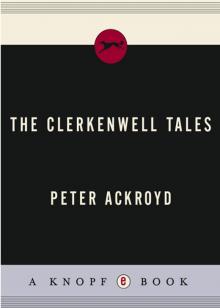 The Clerkenwell Tales
The Clerkenwell Tales The Canterbury Tales
The Canterbury Tales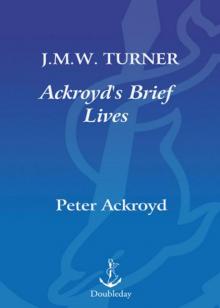 J. M. W. Turner
J. M. W. Turner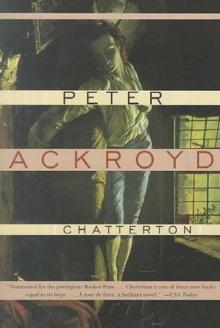 Chatterton
Chatterton The Canterbury Tales – A Retelling
The Canterbury Tales – A Retelling Alfred Hitchcock
Alfred Hitchcock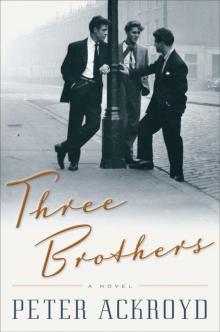 Three Brothers
Three Brothers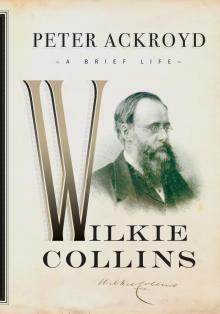 Wilkie Collins
Wilkie Collins Venice
Venice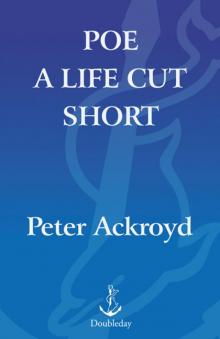 Poe
Poe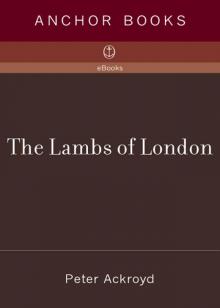 The Lambs of London
The Lambs of London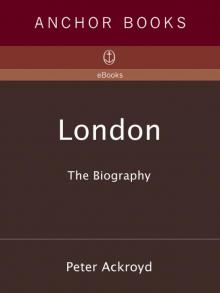 London
London Queer City
Queer City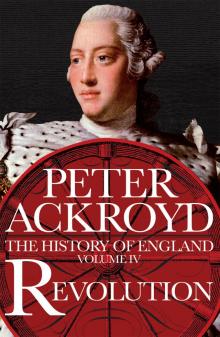 Revolution, a History of England, Volume 4
Revolution, a History of England, Volume 4 Venice: Pure City
Venice: Pure City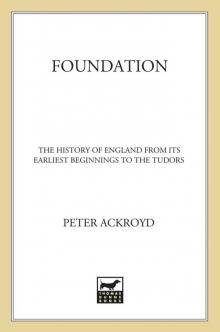 Foundation
Foundation Thames
Thames The Plato Papers
The Plato Papers The house of Doctor Dee
The house of Doctor Dee Rebellion: The History of England from James I to the Glorious Revolution
Rebellion: The History of England from James I to the Glorious Revolution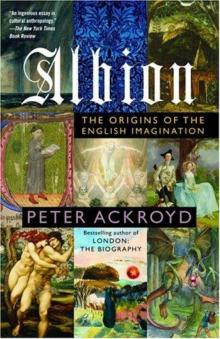 Albion: The Origins of the English Imagination
Albion: The Origins of the English Imagination The Fall of Troy
The Fall of Troy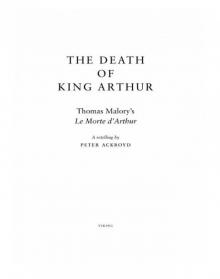 The Death of King Arthur
The Death of King Arthur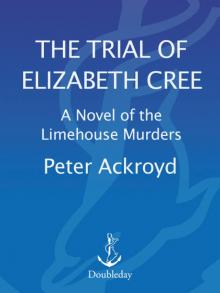 The Trial of Elizabeth Cree
The Trial of Elizabeth Cree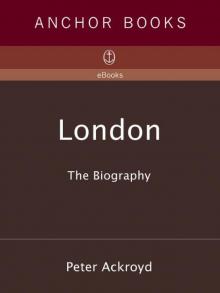 London: The Biography
London: The Biography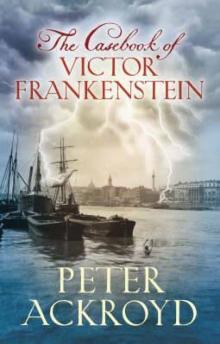 The Casebook of Victor Frankenstein
The Casebook of Victor Frankenstein Hawksmoor
Hawksmoor Charlie Chaplin
Charlie Chaplin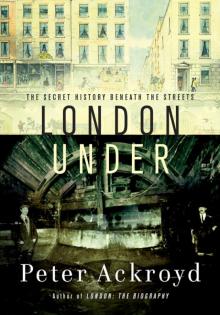 London Under
London Under